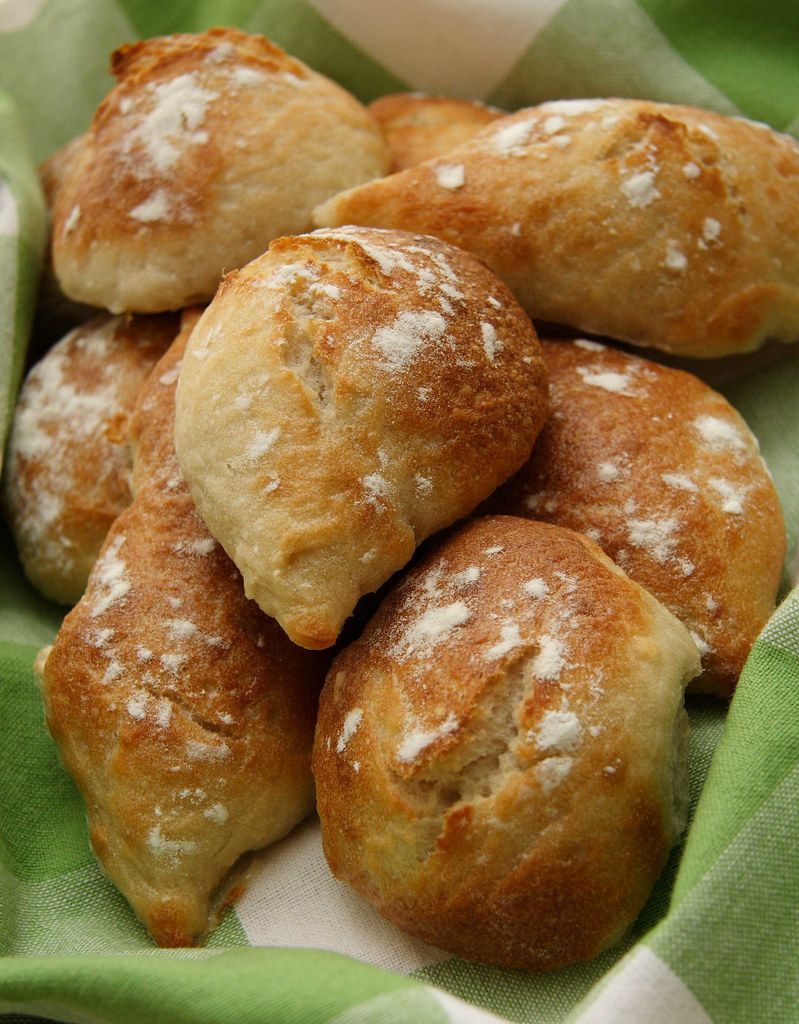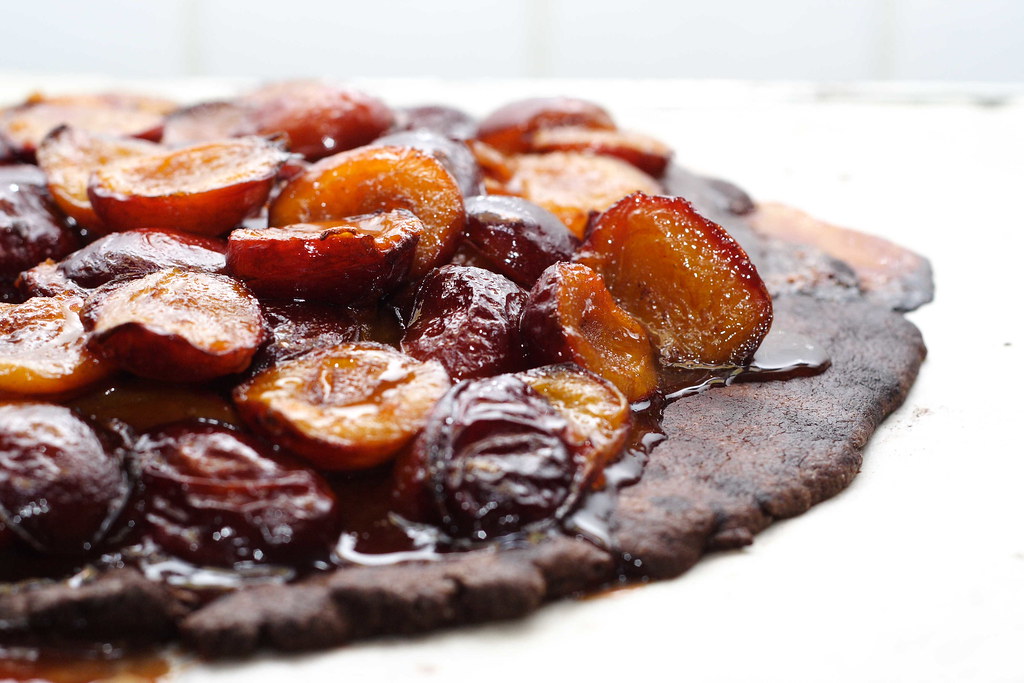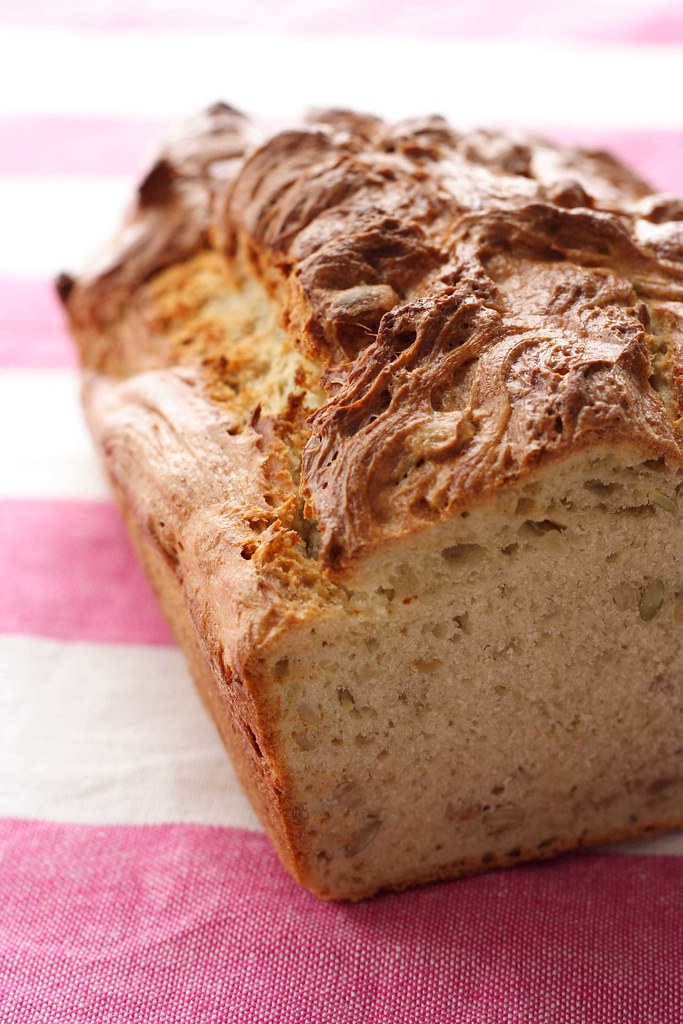
...my Bread!" For the first time ever, I’ve managed to participate in the blogging event “Waiter, there’s something in my…” – a monthly blogging event that is hosted in turn by Andrew of SpittoonExtra, Johanna of ThePassionateCook, and Jeanne of CookSister. Despite a whole lot of interesting topics, there was always something coming that prevented me from taking part – much to my dismay. And I haven’t even mentioned that I also missed out on the last two Sugar High Fridays…:-(
However, since this month’s theme is bread and I’m baking quite frequently, it would have been really weird not to do anything about it. What I like about those blogging events is the opportunity to think the unusual, to try new ingredients or new techniques, and to step out of your comfort zone. Not that I’m doing completely crazy stuff but before SHF#27 I had never thought of making flourless cakes. And one of the monthly food photography challenges made me think about the different shades of white for the first time.
For "Waiter, there's something in my...Bread" I thought I should try my hands on a more involved recipe than the ones I’ve made recently – be warned, this is a 2-days recipe. Furthermore, I wanted to bake something healthy yet delicious: Coarse-grained whole wheat bread with cooked wheat berries, it is! The original recipe comes from the already widely mentioned cookbook “Amy’s Bread”. The leavening is done by a sponge starter which is pretty much the same thing as the poolish I’ve used before. However, there is big difference in texture: Amy’s sponge starter is rather stiff and stringy but not really hard to work with. Her sponge recipe would have been sufficient to make four batches of the bread so I halved the recipe. One part went into the whole wheat bread, the other part into a batch of crispy white bread rolls. The original recipe also calls for chopped walnuts which I omitted in favour of the wheat berries (I tripled the original amount). To be precise, I used cracked wheat and just guessed that it should be the same thing that Amy calls wheat berries. That cracked wheat gave the bread a little bit of extra bite and slightly nutty flavour (even if you can hardly see the grains).
Whole Wheat Bread with Wheat Berries
The ingredients
1 ½ cups/12 ounces/342g water
¼ tsp dry yeast
3 ½ cups/16 ounces/456g unbleached all-purpose flour
The dough
¾ tsp dry yeast
¼ cup/2 ounces/57g warm water
1 2/3 cup/8 ounces/228g whole wheat flour
1 cup/4 ½ ounces/128g bread flour
2 tbsp plus 2 tsp/1 ounce/28.5g polenta
1 tbsp kosher salt/1 tsp salt, heaped
1 cup/8 ounces/228g sponge starter
1 cup/8 ounces/228g cold water or reserved wheat berry cooking liquid
1 tbsp honey
1 tbsp oil
1 ½ cup/9 ounces/256g cooked wheat berries
1
You can cook the wheat berries ahead of time. If using volume measurements, cooked wheat berries have three times the volume of uncooked wheat berries. That means, for 1 ½ cups cooked wheat berries, you’ll cook ½ cup. If you like, cook some more berries and freeze for future use.
Place the wheat berries in a pot and add water until they’re covered at least by 2 centimetres. Let come to a boil and cook until the berries are plump which will take 30-40 minutes. Drain and reserve the cooking liquid.
2
Mix all ingredients, stirring 2-3 minutes with a wooden spoon, until a smooth but stiff dough has formed (this could also be done by a mixer with the dough hook attached). Put the dough into a 2-litre-vessel and cover with plastic wrap. If you want to use the sponge starter as soon as possible, let sit at room temperature until the dough has tripled in volume and just starts collapsing. This will take 6-8 hours. When the sponge is ready, it should be used immediately before it collapses too much. If you want to use the sponge the next day or the day after, put the sponge into the fridge and let it rise for at least 14 hours. When using in a recipe, let the sponge come to room temperature first or use warm water instead of cold water.
3
For the dough, place the yeast together with the warm water into a bowl and stir to dissolve. Let stand for three minutes.
4
Meanwhile, mix all the other dry ingredients in a bowl and set aside.
5
Add the sponge starter, the cool water, honey, and oil to the yeast water. Mix for 1-2 minutes to break up the sponge. Add the dry ingredients, stirring vigorously with a wooden spoon until a shaggy mass forms.
6
Place dough onto a lightly floured work surface and knead for 5-7 minutes until the dough becomes smooth and elastic. If the dough seems too stiff, add more cold water by the tablespoon. Form a loose ball and let rest for 20 minutes so the gluten strands can relax.
7
Flatten and stretch the dough into a large rectangle. Put the cooked wheat berries atop and fold together like a business letter. Knead gently for 2-3 minutes until all the berries are incorporated.
Shape the dough into a ball and let it rest in an oiled bowl, tightly covered with plastic wrap, for about an hour at room temperature. The dough should start to rise but not double during this stage.
9
Put the dough into the fridge for one night to develop more flavour.
10
The next day, let the dough come to room temperature (about two hours). After that, divide the dough into 2 halves and shape both into round loaves. Place on baking paper and let rise for 2-3 hours or until they’re doubled in size. (Note: I started dividing the dough after half an hour and also shortened the rising time to 1 ½-2 hours. I did this not only because of time pressure but also to get a bit more oven spring. Not sure, if I should recommend it but it worked just fine.)
11
In the meantime, preheat the oven with a pizza stone inserted (if using) to 230 degrees Celsius. This should take about 30-40 minutes. Slash the loaves with a very sharp knife and insert into the oven. Quickly pour a cup of hot water onto the bottom or mist with a plant sprayer and immediately shut the oven door. Repeat this twice during the first five minutes of baking.
12
Bake loaves for 20 minutes, then reduce the temperature to 200 degrees Celsius and bake for another 15-20 minutes. The loaves should be golden brown and sound hollow when tapped on the bottom.
The source
Recipe adapted from “Amy’s Bread”











